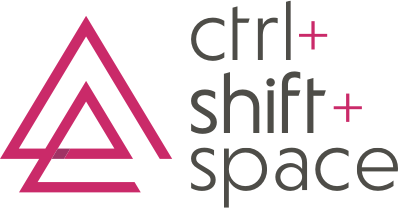Photo: PONS + HUOT
A Baker's Dozen Tips to Use Until Personal Workplace Bubbles Are a Real Thing...
After years of working in an open office, I daydreamed over having a ‘personal workplace bubble’ that, at my voice command, a dome would pop-up and enclose my workstation to block out the distractions that kept me from concentrating. Maybe the dome could even control the light, temperature, sound and air quality at my open office desk. Perhaps the dome would double as a computer display, as well as project colors or pictures on the exterior that would indicate what work mode I was in so other employees would know if it was OK to interrupt me. Wouldn’t that be amazing? I wondered how much more productive and happy I would be at work, to have immediate control over my physical space with my own personal preferences, whenever and however I wanted at any given moment.
At the time, I chuckled to myself over this idea. I couldn’t imagine how such a complex product would be engineered, not to mention the cost to produce and deploy such an elaborate unit, which the average employee would likely never be outfitted with in a million years.
Flash forward to today, and the idea of a personal bubble is more relevant than ever. In fact, right now it seems like the perfect PPE (personal protection equipment) workplace solution for the situation we’re in. Imagine, if we were able to keep our distance from others and manage a ‘clean’ environment within our workplace bubble, how this might offer a sense of control and security in a world that is now traumatized over the thought of going out in public, much less entering an enclosed office with more than 10 people, for extended periods of time on a regular basis. It’d be isolation en vogue.
Photo: PONS + HUOT
Flash forward to today, and the idea of a personal bubble is more relevant than ever.
While the idea of a personal work bubble at that level of highly engineered complexity might sound sci-fi surreal, the reality is that from here forward, it’s more paramount than ever for workplace design to address how people perceive and experience personal safety and wellbeing, through visual and physical cues in the work environment.
So, how can we use design to quell our fears and phobias over germs and crowds, and instead evoke a sense of calm and security – particularly when the #nextnormal for some might be potentially ridden with symptoms of PTSD?
Until an affordable personal work bubble is developed, here are some design ideas that can be immediately deployed:
1. Zen, wellness, meditation rooms - spaces to get away and recenter, alone or in small groups, with proper distancing.
2. Small meeting pods or rooms - Increase the number of small (1-3 person) spaces, that have filtered air, and improved A/V and sound quality.
3. Color - broad use of calming colors (think blues, greens, pinks and warm neutrals) across the office will encourage peace and serenity in the work areas; use of brighter colors to call attention to places where cleaning supplies or sanitizing stations are located; use of bold colors will remind people they should take extra caution in areas that are used or touched frequently by many people; or use of colored flooring schemes to indicate physical distancing.
4. Sanitizing and hand-washing areas - place at office entries, along high-traffic areas, near handles like doors, restroom stalls, faucets, cupboards, etc.
5. Elements of Nature - nature-inspired artwork or water features add a sense of calm and groundedness, or more plants will oxygenate and provide cleaner air.
6. Touch-free - doors, automatic flushers, towels/soap dispensers, etc., for obvious reasons.
7. Antimicrobial fabrics and materials - clearly marked as such - on heavily-used furnishings or building components.
To offset the psychological anxiety of the eventual reentry to the workplace, here are some wellness components to consider implementing:
8. Compassion - patience and understanding for each other, as everyone will have had a different experience during the crisis and stay at home period. Some will simply act with increased caution, while others might be more fastidious than usual or perhaps will be even more obsessively compulsive over germs.
9. Flexibility - expand choices for those that can work from home; offer variable hours or shifts; or provide a variety of work areas to select from for those that must work at the office.
10. Communication - deep listening, and clear and regular messaging by management to reinforce the fact that employees are being cared for.
11. Benefits - improve mental and physical health care insurance and wellness programs.
12. Air quality - update HVAC and air-filtration systems (perhaps a personal HEPA air filter-system at your desk?)
13. Janitorial - expand cleaning protocols, daily checklists or other visual cues, like hourly cleaning schedules, update frequently and post conspicuously throughout the office for all to see.
These are just top of mind solutions, most of which can be expedited for quick enforcement and somewhat inexpensive installation. For those solutions that may take more time to research, and a bigger budget, to bring to reality, make those a long term goal – but don’t forget to clearly communicate with your team that their health and wellbeing are top priorities. While it might take time to complete, the options are being carefully evaluated and will eventually be put into practice when the timing and budget permits.
For further workplace strategy or design ideas, keep reading our blog to learn more, or get in touch for a consultation. In the meantime, we’ll get cracking on developing our own version of workplace PPE - in the form of a Bubble Dome...



